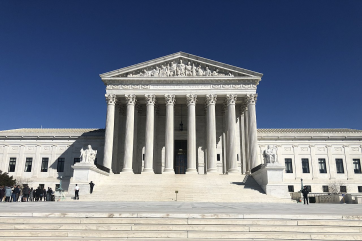Penumbral Lunar Eclipse This Friday: How and Where is the Best Time and Place to View It?
By Russell WesterholmKeen sky-watchers will be able to see a minor lunar eclipse Friday night, Oct. 18, when the moon floats on by the Earth's faint outer shadow, Space.com reported.
The moon will pass through that shadow, known as the penumbra, Friday night with a peak eclipse darkness time of 7:50 p.m. EDT (2350 GMT). Experts said this lunar event is worth looking out for, but it will not come close to being the spectacle of a total eclipse.
"Unusual shading on the southern half of the moon should be fairly plain," Sky and Telescope's Alan MacRobert wrote Sunday. "Look for the penumbral shadow to move from (celestial) east to west across the disc. You might be able to detect lesser traces of penumbral shading for about 45 minutes before and after mid-eclipse."
For viewers on the U.S.'s eastern half, the penumbral eclipse will be readily viewable given the sky is clear of any bad weather. Unfortunately, for west coast viewers, the deepest phase of the eclipse will be in late afternoon, just before the moon even rises.
Viewers in the Caribbean and eastern part of South America will be able to see it, as will Europe, Asia and Africa later in the night and early in the morning.
Penumbral is one of three different eclipses, including total (the most spectacular) and partial. In a total eclipse, the Earth's umbral (core) shadow falls across the moon creating an all-encompassing shadow. During a partial, only part of the moon is covered and a penumbral only involves the Earth's faint outer shadow.
CLICK HERE to view previously snapped photos of penumbral eclipses, so you know what to look for Friday night.
Also, Space.com has encouraged anyone who takes a photo of the penumbral eclipse to send them to their managing editor Tariq Malik at SpacePhotos@Space.com.








